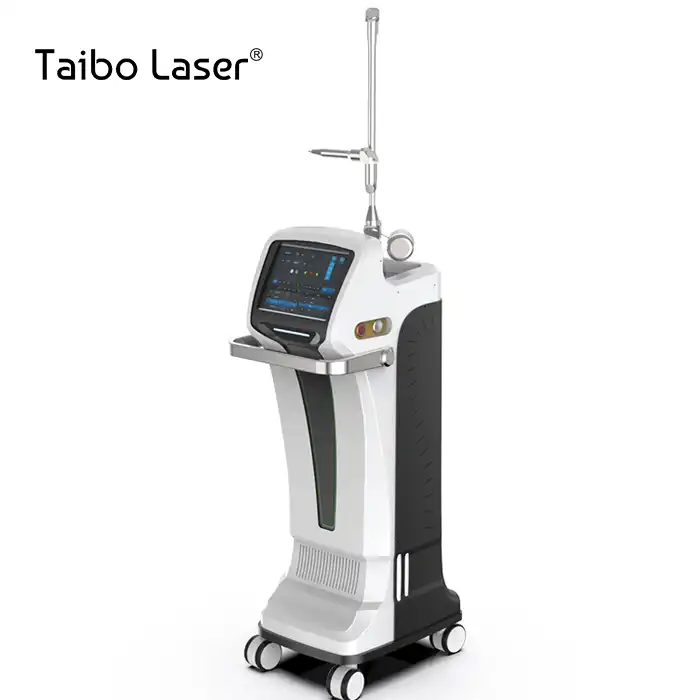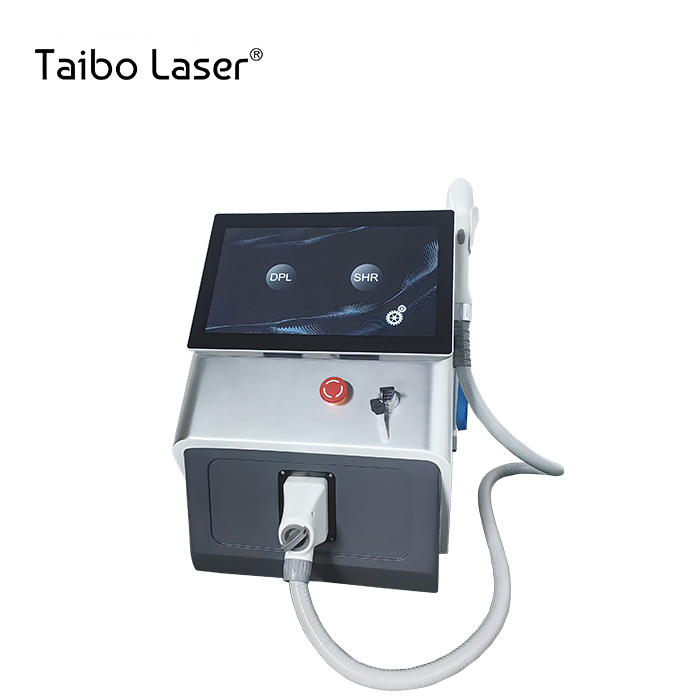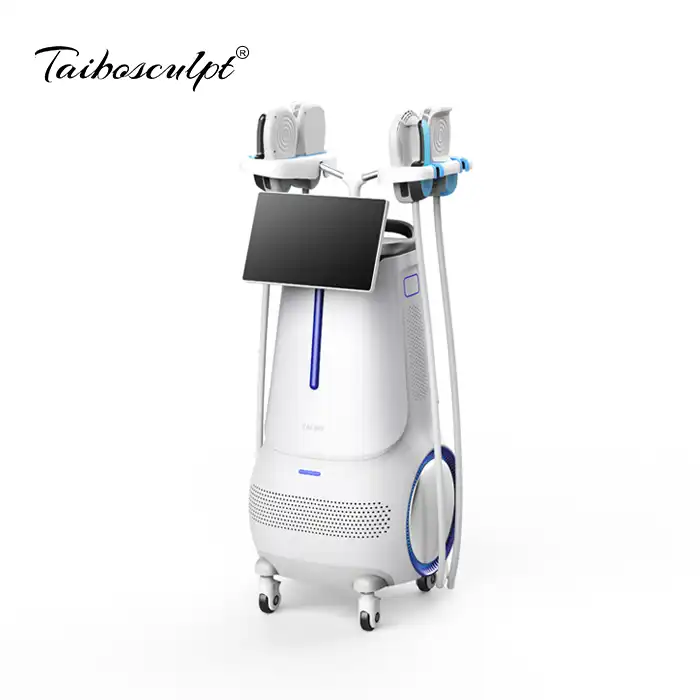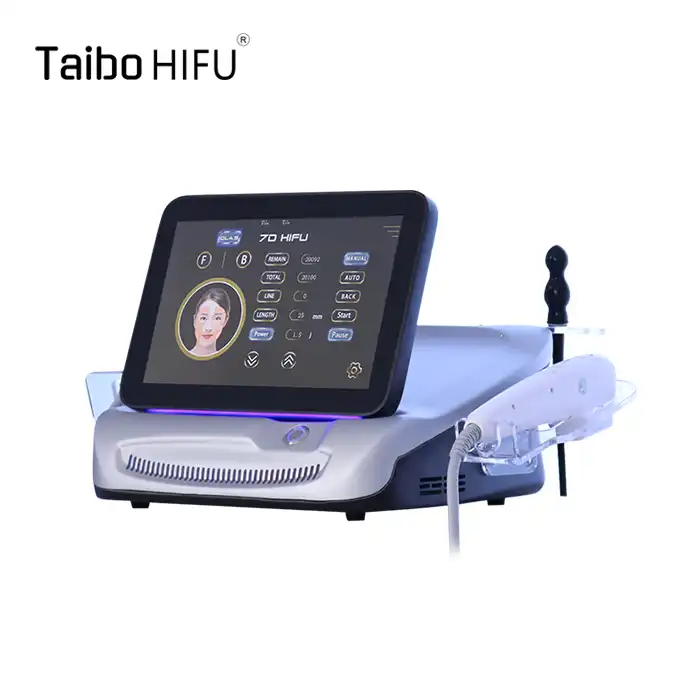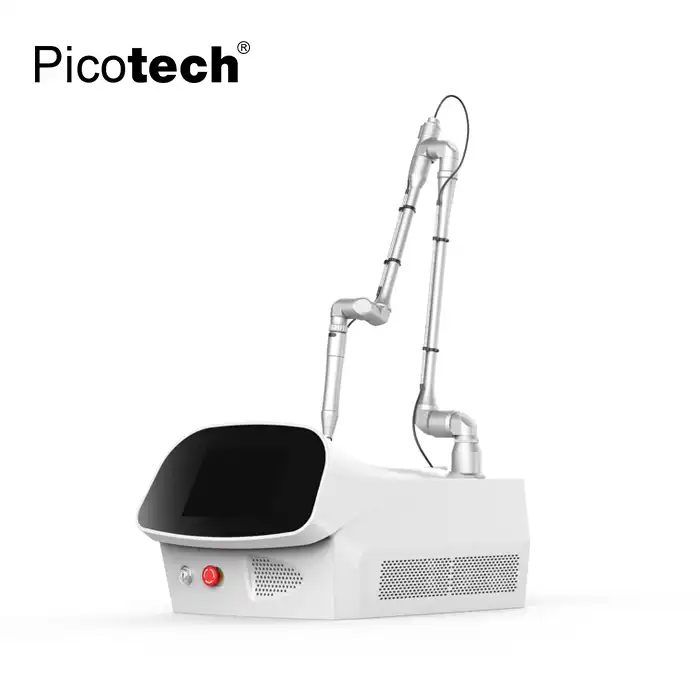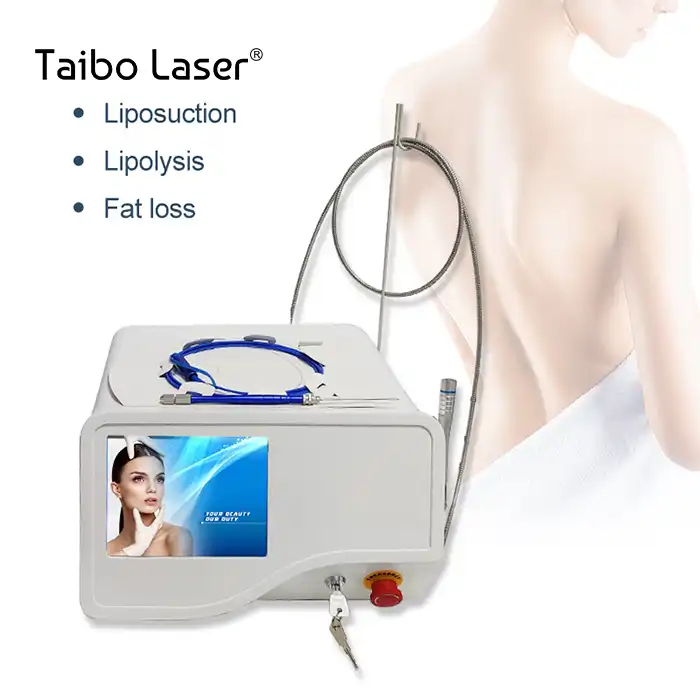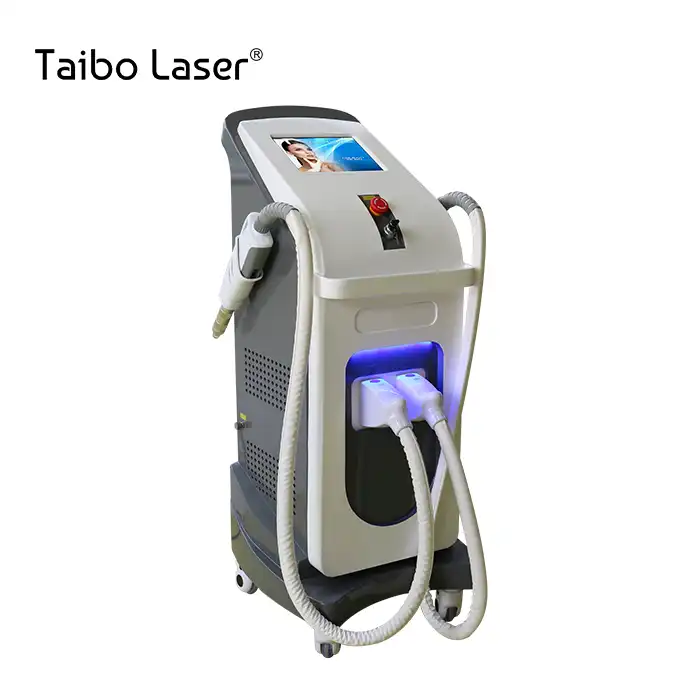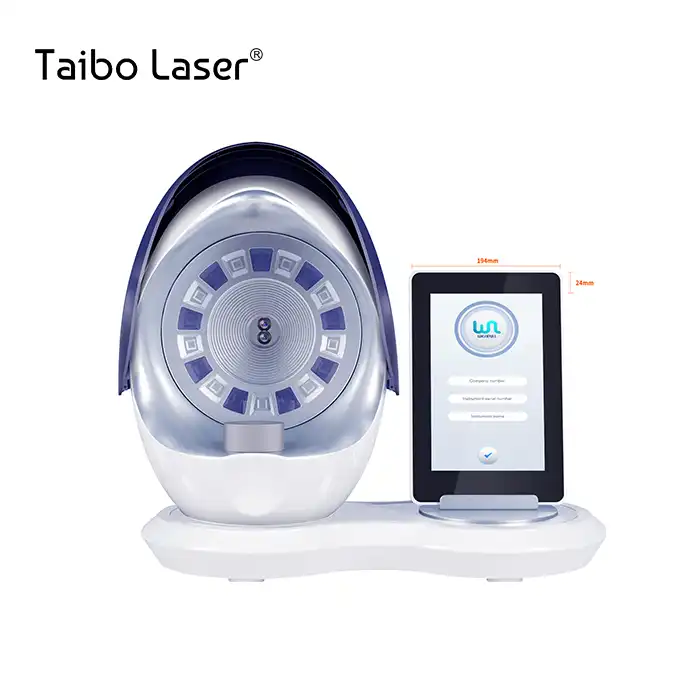
2025 Tattoo Removal Machine | Q Switch Laser
2025-10-14 09:23:45
Imagine walking into your aesthetic clinic only to face another dissatisfied client who's tried multiple tattoo removal sessions elsewhere with minimal results, painful experiences, and even scarring. The frustration is real for both practitioners and clients when dealing with outdated technology that promises results but fails to deliver. This is where the q switch laser tattoo removal machine revolutionizes the entire landscape of aesthetic treatments. As we move through 2025, advanced Q-switch technology has evolved to address these exact pain points, offering precise pigment elimination, minimal discomfort, and exceptional safety profiles that build trust between practitioners and their clients. Whether you're managing stubborn multi-colored tattoos, treating pigmentation disorders, or expanding your clinic's service offerings, understanding the latest innovations in q switch laser tattoo removal machine technology will position you at the forefront of the aesthetic industry.
Understanding Q Switch Laser Technology for Tattoo Removal
The q switch laser tattoo removal machine operates on a sophisticated principle that sets it apart from conventional laser systems. At its core, this technology utilizes ultra-short pulse durations measured in nanoseconds to deliver concentrated energy bursts directly to pigmented areas. When the laser beam penetrates the skin, it specifically targets melanin and tattoo ink particles without causing significant thermal damage to surrounding tissues. The Q-switched mechanism allows the laser to build up energy and release it in an extremely brief pulse, creating a photoacoustic effect rather than a photothermal one. This distinction is critical because it means the pigment particles literally shatter into microscopic fragments that your body's immune system can naturally process and eliminate over time. Modern q switch laser tattoo removal machine systems typically incorporate multiple wavelengths, with 1064nm effectively targeting darker pigments like black and blue, 532nm addressing red, orange, and yellow inks, and 755nm specifically designed for green and blue-green pigments. This multi-wavelength capability ensures comprehensive treatment across the full spectrum of tattoo colors. The advanced cooling systems integrated into these machines protect both the device components and the client's skin during treatment, maintaining optimal operating temperatures while enhancing comfort levels. With adjustable spot sizes ranging from 2mm to 10mm, practitioners can customize treatment parameters based on the tattoo's size, location, and the specific pigments being addressed. The pulse duration of approximately 6 nanoseconds ensures that energy delivery remains within the optimal window for pigment fragmentation while minimizing collateral tissue damage.
-
Working Principles of Q-Switched Nd:YAG Laser Systems
The Q-switched Nd:YAG laser system represents a comprehensive technological platform that integrates several critical components working in harmony. The laser generator produces the fundamental light beam, while the articulated arm delivery system ensures precise targeting and maneuverability during treatments. The power supply maintains consistent energy output, and the sophisticated cooling system prevents overheating that could compromise performance or safety. The display and control interface allows practitioners to monitor treatment parameters in real-time and make adjustments as needed throughout the procedure. What makes the q switch laser tattoo removal machine particularly effective is its ability to generate peak energy levels reaching up to 2000mj per square centimeter, concentrating enormous power into incredibly brief pulses. Understanding the therapeutic principle helps practitioners optimize treatment protocols for different skin types and pigmentation concerns. When the nanosecond pulse strikes pigment particles in the epidermis or dermis, the rapid energy absorption causes the particles to expand rapidly and fracture into tiny fragments. These microscopic pieces are small enough for macrophages and other immune cells to engulf and transport through the lymphatic system for eventual elimination. The process typically requires multiple treatment sessions spaced several weeks apart, allowing the body adequate time to clear the fragmented pigment between sessions. This gradual approach not only achieves superior results but also minimizes the risk of adverse effects such as hyperpigmentation, hypopigmentation, or scarring that can occur with more aggressive single-session approaches.
Clinical Applications Beyond Tattoo Removal
While tattoo elimination remains the primary application, the versatility of q switch laser tattoo removal machine technology extends far beyond this single use case. Dermatologists and aesthetic practitioners worldwide rely on these systems to address a comprehensive range of pigmentation disorders and skin imperfections. For epidermal pigmentation issues such as freckles, age spots, and solar lentigines, the 532nm wavelength provides exceptional clearance rates often visible after just one or two treatment sessions. The laser energy selectively targets the excess melanin in these superficial lesions, leaving surrounding healthy skin completely unaffected. Deeper dermal pigmentation presents more complex challenges that the q switch laser tattoo removal machine handles with remarkable efficacy. Conditions like nevus of Ota, which manifests as bluish-gray pigmentation typically around the eye area, respond exceptionally well to the 1064nm wavelength. The longer wavelength penetrates deeper into the dermis where these pigment deposits reside, gradually lightening the discoloration over a series of treatments. Melasma, often considered one of the most stubborn pigmentation disorders, requires a more nuanced treatment approach. While traditional Q-switch lasers sometimes exacerbated melasma due to the inflammatory response they triggered, newer protocols using lower fluences and longer intervals between sessions have shown promising results when combined with appropriate skincare regimens.
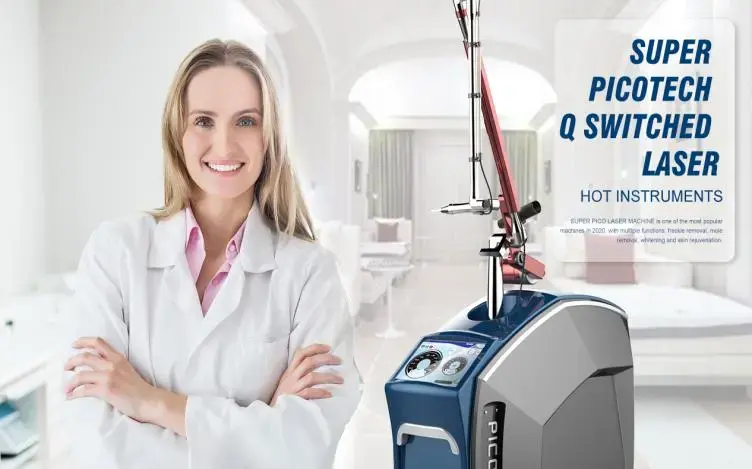
-
Skin Rejuvenation and Anti-Aging Benefits
Recent advances in q switch laser tattoo removal machine applications have revealed impressive skin rejuvenation capabilities that extend well beyond pigment removal. The sub-therapeutic doses of laser energy stimulate dermal remodeling processes without causing visible injury to the skin surface. This approach, sometimes called laser toning or laser facial, triggers collagen production in the deeper layers of the skin, gradually improving texture, reducing pore size, and diminishing fine lines. The mechanical effect of the laser pulses also appears to reorganize collagen fibers, contributing to improved skin firmness and elasticity. The treatment of vascular lesions represents another expanding application area for these versatile systems. Small spider veins, telangiectasia, and certain types of vascular birthmarks respond to specific wavelengths and energy settings. The 532nm wavelength shows particular affinity for hemoglobin, making it effective for superficial vascular concerns. Practitioners appreciate the q switch laser tattoo removal machine for its ability to address multiple aesthetic concerns with a single device, maximizing their equipment investment while offering clients comprehensive treatment options. The non-invasive nature of these procedures, combined with minimal downtime, makes them attractive options for clients seeking aesthetic improvements without the commitment or recovery period associated with surgical interventions.
Advanced Features of 2025 Q Switch Laser Systems
The evolution of q switch laser tattoo removal machine technology in 2025 brings remarkable innovations that enhance both safety and efficacy. Military-grade Q-switching technology enables even shorter pulse widths, some systems achieving picosecond-range durations that further improve pigment fragmentation while reducing thermal effects. This advancement translates directly to better outcomes with fewer treatment sessions and reduced risk of complications. The integration of artificial intelligence and machine learning algorithms into modern systems provides real-time tissue analysis and automated parameter recommendations, helping practitioners optimize treatment settings for each individual client and specific treatment area. Self-diagnostic capabilities represent a significant leap forward in equipment reliability and user confidence. Contemporary q switch laser tattoo removal machine platforms incorporate over thirty built-in inspection points that continuously monitor system performance, alerting operators to potential issues before they affect treatment delivery. This proactive maintenance approach minimizes unexpected downtime and ensures consistent results across all treatment sessions. The optical output systems utilize no-adjustment integration processes that guarantee precise light delivery without polarization effects that could compromise treatment uniformity. These sophisticated engineering solutions mean practitioners can focus on patient care rather than constantly troubleshooting equipment performance issues.
-
Enhanced Safety Features and User Experience
Safety remains paramount in aesthetic laser treatments, and modern q switch laser tattoo removal machine systems incorporate multiple protective mechanisms. The built-in water circulation cooling system maintains optimal operating temperatures throughout extended treatment sessions, protecting both the device components and the client's skin from excessive heat buildup. Emergency stop buttons provide immediate power cutoff capability in the unlikely event of an adverse reaction or equipment malfunction. Eye protection requirements remain stringent, with operators required to wear appropriate wavelength-specific safety goggles, and the nominal ocular hazard distance (NOHD) specified at one kilometer for maximum power settings. The user interface evolution has dramatically improved the practitioner experience. Large color touchscreens replace complicated button arrays, presenting intuitive controls and real-time treatment feedback. Pre-programmed treatment protocols for common indications allow quick setup while still permitting full customization for unique clinical situations. The modular design philosophy employed in current-generation systems simplifies maintenance procedures and reduces accessory replacement costs. When components do require service, the standardized modules can often be swapped quickly without requiring factory technician visits, minimizing clinic downtime and maintaining revenue continuity.
Selecting the Right Q Switch Laser for Your Practice
Choosing the optimal q switch laser tattoo removal machine requires careful consideration of multiple factors aligned with your specific practice needs and patient demographics. The number of wavelengths offered stands as a primary consideration, with triple-wavelength systems (532nm, 755nm, 1064nm) providing maximum versatility for treating the full spectrum of tattoo colors and pigmentation concerns. Practices focusing primarily on tattoo removal might prioritize systems with higher maximum energy outputs, enabling more aggressive treatment of dense, professional tattoos. Conversely, clinics emphasizing skin rejuvenation and pigmentation correction might value precise low-energy capabilities that enable gentle laser toning protocols. Energy output specifications deserve close examination beyond just maximum power ratings. The adjustability range matters significantly, as effective treatment protocols often require fine-tuning energy levels to match individual skin types, pigment densities, and treatment areas. Look for systems offering granular energy control in small increments rather than large steps that limit protocol customization. Spot size variability influences treatment efficiency and versatility. Larger spot sizes enable faster coverage of extensive treatment areas, while smaller spots provide enhanced precision for detailed work around sensitive structures or small tattoos. The ability to adjust spot size without changing handpieces adds convenience and workflow efficiency during busy clinic days.
-
Investment Considerations and Return Analysis
The financial investment in a q switch laser tattoo removal machine represents a significant commitment that demands thorough return-on-investment analysis. Purchase prices vary widely based on manufacturer, feature sets, and included accessories, with quality systems typically ranging from mid to high five figures. However, the revenue potential justifies this investment for practices with adequate patient volume. A single tattoo removal session can generate several hundred dollars in revenue, and most clients require multiple treatments for complete clearance. When you factor in additional revenue streams from pigmentation treatments, skin rejuvenation procedures, and other applications, a well-utilized system can achieve payback within the first year of operation. Beyond the initial purchase price, consider ongoing operational costs including maintenance contracts, replacement parts, consumables, and marketing expenses to build your treatment volume. Some manufacturers offer comprehensive service packages that bundle preventive maintenance, priority technical support, and replacement parts coverage for predictable annual expenses. The warranty duration and scope provide important indicators of manufacturer confidence in their product reliability. Look for systems backed by at least two-year comprehensive warranties covering both parts and labor. Extended warranty options may offer cost-effective protection for practices planning to keep equipment for many years before upgrading to newer technology.
Treatment Protocols and Best Practices
Achieving optimal outcomes with q switch laser tattoo removal machine treatments requires adherence to evidence-based protocols and continuous refinement based on individual client responses. The initial consultation establishes realistic expectations and gathers critical information including tattoo characteristics, skin type, medical history, and any contraindications. Professional tattoos typically contain higher pigment densities and may include challenging colors that require more aggressive treatment parameters or additional sessions compared to amateur tattoos. The Kirby-Desai scale provides a useful framework for predicting the number of treatments required based on factors like skin type, ink colors, tattoo depth, and scarring. Treatment intervals represent a crucial variable that significantly impacts outcomes and client satisfaction. The traditional approach of spacing sessions six to eight weeks apart allows adequate time for immune-mediated pigment clearance between treatments. Recent research suggests even longer intervals of ten to twelve weeks may enhance results by providing the body maximum opportunity to eliminate fragmented pigment before introducing additional breakdown. Rushing treatments with shorter intervals often proves counterproductive, potentially increasing inflammation without improving clearance rates. Patient education about the gradual nature of the elimination process helps maintain realistic expectations and treatment adherence throughout the multi-session protocol.
-
Managing Client Expectations and Complications
Transparent communication about anticipated results and potential complications builds trust and enhances satisfaction throughout the treatment journey. Most clients achieve seventy-five to ninety-five percent tattoo clearance over a series of treatments, though complete elimination remains unpredictable and depends on numerous variables including ink composition, tattoo depth, and individual immune response. Certain pigments, particularly green and yellow, present persistent challenges despite advances in laser technology. Setting realistic expectations from the outset prevents disappointment and maintains the client relationship even when results fall short of complete clearance. Post-treatment care instructions significantly influence healing outcomes and minimize complication risks. Immediate application of cold compresses reduces discomfort and inflammation. Antibiotic ointments and protective dressings maintain optimal healing conditions during the critical first few days. Sun protection remains essential throughout the entire treatment course and for several months afterward, as ultraviolet exposure can trigger dyspigmentation in treated areas. Monitoring for signs of infection, excessive crusting, or unexpected color changes allows early intervention if complications develop. The q switch laser tattoo removal machine, when operated by properly trained practitioners following established protocols, demonstrates an excellent safety profile with serious complications remaining rare when appropriate patient selection and treatment techniques are employed.
OEM Services and Customization Options
Xi'an Taibo Laser Beauty Company recognizes that aesthetic practices and distributors often require customized solutions that align with their brand identity and market positioning. The comprehensive OEM service program provides flexibility across multiple dimensions including device branding, packaging design, user interface customization, and technical specifications modifications. For established clinics looking to offer private-label equipment or distributors building regional brand recognition, these customization options create differentiation in competitive markets while maintaining the underlying quality and performance of proven technology platforms. The branding customization extends beyond simple logo placement to include complete housing color schemes, branded consumables and accessories, and customized software interfaces featuring your company name and contact information. Packaging design services ensure your branded q switch laser tattoo removal machine arrives in presentation-quality packaging that reinforces your premium positioning and creates positive first impressions with clients. Technical modifications allow adaptation of standard platforms to meet specific regional requirements or unique clinical applications, ensuring your customized system delivers exactly the capabilities your market demands.
-
Quality Certifications and Compliance
Operating an aesthetic laser practice requires strict adherence to regulatory frameworks that vary by jurisdiction but universally emphasize safety and efficacy. The q switch laser tattoo removal machine from reputable manufacturers includes comprehensive certification documentation demonstrating compliance with international standards. CE certification indicates conformity with European health, safety, and environmental protection standards, enabling legal distribution throughout European Economic Area countries. The ISO 13485 certification specifically addresses medical device quality management systems, providing assurance that manufacturing processes maintain consistent quality controls and traceability throughout production. For practices in markets requiring FDA approval, understanding the regulatory pathway and compliance requirements prevents costly operational disruptions. While the FDA clearance process for laser devices can be lengthy and expensive, it provides the highest level of regulatory validation recognized globally. Many international markets accept FDA clearance as meeting or exceeding their own regulatory requirements, potentially simplifying export procedures and market entry strategies. Working with manufacturers who maintain current certifications and actively pursue additional regulatory approvals demonstrates their commitment to quality and provides peace of mind that your equipment investment meets all applicable legal requirements for operation in your jurisdiction.
Future Trends in Laser Tattoo Removal Technology
The aesthetic laser industry continues rapid innovation with several emerging technologies poised to further improve q switch laser tattoo removal machine capabilities and clinical outcomes. Picosecond lasers, featuring pulse durations measured in trillionths of a second rather than billionths, generate even more effective photoacoustic effects with reduced thermal damage. Early clinical evidence suggests picosecond systems achieve comparable or superior clearance with fewer treatment sessions, though the technology currently commands premium pricing that may limit adoption until costs decrease. The integration of fractional laser delivery patterns with Q-switch technology creates interesting hybrid approaches that may enhance collagen remodeling benefits while maintaining pigment elimination efficacy. Artificial intelligence applications extend beyond current diagnostic assistance to potentially enable fully automated treatment delivery optimized in real-time based on tissue response monitoring. Machine learning algorithms trained on thousands of treatment outcomes could predict optimal protocols for new patients based on their specific characteristics, reducing the learning curve for new practitioners and standardizing care quality across providers. The development of novel laser wavelengths targeting previously resistant pigment colors represents another active research area, with particular interest in more effective solutions for challenging green and fluorescent inks that currently require extensive treatment sessions.
Conclusion
The q switch laser tattoo removal machine stands as an indispensable tool for modern aesthetic practices, offering proven efficacy for tattoo elimination and diverse pigmentation concerns. Advanced 2025 systems deliver superior results through optimized engineering and sophisticated safety features that protect both clients and practitioners.
Cooperate with Xi'an Taibo Laser Beauty Company
As a China q switch laser tattoo removal machine manufacturer with over fifteen years of production and export experience, Xi'an Taibo Laser Beauty Company serves as your trusted China q switch laser tattoo removal machine supplier and China q switch laser tattoo removal machine factory. Our commitment to quality is reflected in comprehensive certifications including CE, ISO13485, and ongoing FDA applications. We offer competitive q switch laser tattoo removal machine price options, China q switch laser tattoo removal machine wholesale programs, and High Quality q switch laser tattoo removal machine for sale with two-year warranties and professional after-sales support. Our dedicated team provides installation training, 24-hour online assistance, and customized OEM/ODM services with free logo placement. We invite distributors and clinic owners worldwide to experience our advanced technology firsthand through factory visits and equipment demonstrations. Contact us at susan@taibobeauty.com to discuss exclusive distributor opportunities, bulk purchase advantages, and how our expertise can elevate your aesthetic practice. Save this information for quick reference when you're ready to upgrade your laser systems.
References
1. Anderson RR, Parrish JA. "Selective Photothermolysis: Precise Microsurgery by Selective Absorption of Pulsed Radiation." Journal of Investigative Dermatology.
2. Bernstein EF, Schomacker KT, Basilavecchio LD. "Treatment of Tattoos with a Q-Switched Alexandrite Laser." Archives of Dermatology.
3. Goldman L, Rockwell RJ. "Laser Systems and Their Applications in Medicine and Biology." Current Problems in Dermatology.
4. Ross EV, Yashar S, Naseef GS. "Comparison of Response of Professional and Amateur Tattoos to Picosecond and Nanosecond Q-Switched Neodymium:YAG Lasers." Dermatologic Surgery.
YOU MAY LIKE













